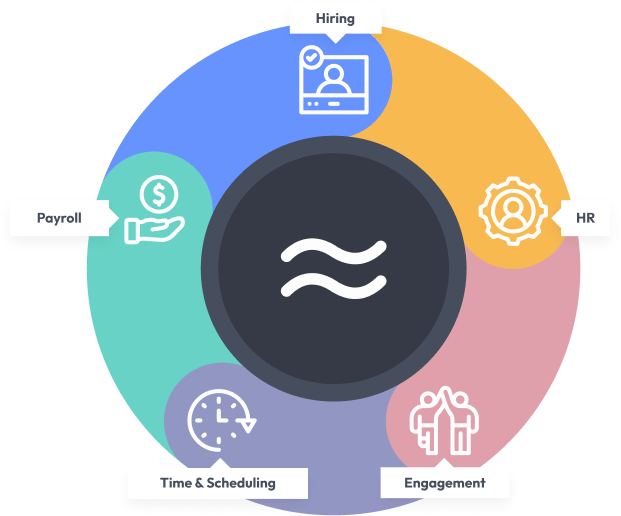How to Hire a Director of Operations: A Practical Guide for Small Business Owners
Let’s be honest—finding the right person to hire director of operations can feel a bit like searching for a unicorn. You want someone who’s strategic, hands-on, and can juggle a dozen tasks without breaking a sweat. Whether you’re running a bustling restaurant, a growing franchise, or a family-owned shop, getting this hire right can make or break your business’s future. So, how do you make sure you’re not just filling a seat, but bringing in a true leader?
Understanding the Role: What Does a Director of Operations Really Do?
First things first, let’s clarify what you’re looking for. The director of operations is the engine that keeps your business running smoothly. From overseeing daily workflows to managing budgets and leading teams, this person wears a lot of hats. For some, the title might sound corporate, but in the world of small business, it’s often a boots-on-the-ground role.
Key Responsibilities
- Streamlining processes and improving efficiency
- Managing and mentoring staff
- Overseeing compliance and safety protocols (learn more about recordkeeping requirements)
- Budgeting and cost control
- Implementing technology and new systems (see how tech impacts payroll costs)
Honestly, the best operations leaders are part coach, part problem-solver, and part firefighter. If you ask me, you want someone who’s just as comfortable rolling up their sleeves as they are building out a five-year plan.
Getting Ready to Recruit Operations Executives
Before you post that job ad, take a step back. Do you know exactly what you need? Start by defining the must-haves and nice-to-haves for your business. Not every company needs the same flavor of leadership. For example, a restaurant chain might prioritize experience with reducing turnover, while a logistics company might need someone with a knack for creative scheduling solutions.
Writing the Job Description
- Be clear about your expectations—vague language leads to vague results (tips for clear employee handbooks)
- Highlight your company culture and growth opportunities (why culture matters)
- Call out benefits, flexibility, and perks—these matter more than ever (impact of benefits on hiring)
For inspiration, check out these job posting examples tailored for hourly and leadership roles.
Where to Find and How to Hire Head of Operations
Now, let’s talk about sourcing. You might be tempted to stick to the usual suspects—Indeed, LinkedIn, referrals. But have you considered industry-specific platforms or even social media? Some of the best candidates are hiding in plain sight, just waiting for the right opportunity.
Smart Sourcing Strategies
- Leverage your network—referrals can surface hidden gems (designing referral programs)
- Use digital recruiting tools to cast a wider net (digital recruiting strategies)
- Consider assessment platforms to screen for leadership skills (pre-employment assessments)
- Don’t overlook passive candidates—they might not be looking, but they’re open to the right offer (how to proactively find candidates)
And if you’re pressed for time (who isn’t?), platforms like Workstream’s hiring automation can help you screen, schedule, and communicate with candidates all in one place. That’s hours saved every week, and fewer headaches for you and your team.
Interviewing and Evaluating: Picking the Right Business Operations Leader
Interviewing for a director-level role is a different ballgame. You’re not just looking for technical chops—you want vision, grit, and the ability to inspire others. Here’s the thing: a slick resume doesn’t always equal a great fit.
What to Look For
- Track record of leading teams through change (case study: low turnover leadership)
- Ability to balance short-term fires with long-term strategy (job satisfaction and turnover intention)
- Strong communication and people skills (qualities of a great general manager)
- Experience with compliance and risk management (legal considerations for employers)
Ask behavioral questions that reveal how they handle real-world challenges. For example, “Tell me about a time you had to cut costs without sacrificing quality.” Or, “How did you handle a major compliance issue?” For more on interviewing, these motivational interviewing techniques are worth a look.
Common Pitfalls to Avoid
- Hiring for pedigree over fit—sometimes the scrappy candidate outperforms the polished one
- Rushing the process—take the time to check references and dig into past results (creative staffing solutions)
- Ignoring red flags—trust your gut, but verify with data (cost of hiring the wrong employee)
Onboarding and Retaining Your Operations Director
Congratulations, you’ve found your person! But don’t pop the champagne just yet. The first 90 days are critical. A thoughtful onboarding process can set your new leader up for success—or leave them floundering.
Effective Onboarding Tips
- Set clear expectations and goals from day one (onboarding templates)
- Provide access to the right tools and data (HRIS analyst guide)
- Foster connections with key team members and stakeholders
- Encourage feedback and two-way communication (bringing out the best in people)
And don’t forget—retention starts on day one. Offering competitive benefits, flexibility, and growth opportunities can help you keep your new operations director engaged for the long haul (impact of benefits on retention).
Conclusion: Building a Strong Operations Team for the Future
Hiring a director of operations isn’t just about filling a role—it’s about setting your business up for sustainable growth. From defining the job to onboarding and beyond, every step matters. If you’re feeling overwhelmed, you’re not alone. Many business owners struggle with the same questions, but with the right approach—and maybe a little help from technology like Workstream’s platform—you can find and keep the leader your business deserves.
For more tips on operations director staffing, check out these resources:






